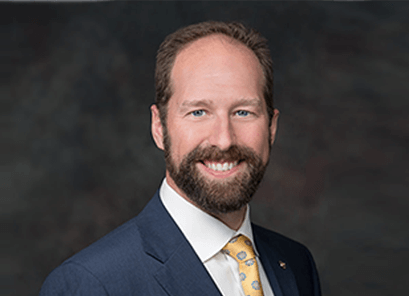At Capacity? Here’s How To Find More Time To Serve More Clients
We all have time sucks in our practice; here’s how one system change helped Micah Shilanski, CFP®, free up hundreds of hours so he could serve more clients.
4.2 min read

Financial Planner, CFP®
You can tell when an advisor is about to be a clown when they throw in a “because” after sharing how many clients they have.
I only have twenty-five clients because I provide more service than any other advisor.
We hear this all the time, and these statements just mean you haven’t surveyed your peers, learned their processes, and just think your processes are far superior because they take one hundred times more work to execute.
You’re not working smarter or harder—that “because” is an excuse for why your practice isn’t as successful as you want it to be.
If this sounds familiar, now is a great time to pause and reflect on why you think this way.
For advisors who see their blindspots and are willing to do the hard work necessary to improve and move beyond client capacity limitations, here are ways to move beyond your self-imposed barriers.

Up against a wall
Like so many head trash lies we tell ourselves, our perceived client capacity is just some subconscious means we’ve implemented to justify our lack of success.
When I come up against a wall, I ask myself where the wall came from—how did this roadblock get rooted in my head?
Usually, the hangups we experience come from a lack of intentionality. If you feel like you are “at capacity,” are you being intentional with your time? Are you actively making decisions, or are you responding to crises as they come up?
Often head trash-related concerns are blind spots for many advisors. We all have blind spots in our practices, which is why Matthew Jarvis, CFP®, and I spend so much money learning from experts to consult with us.
Blind spots
We regularly find six-figure opportunities to improve the practice through our coaching programs and masterminds. And for many advisors, these are just little things they’re blind to that soak up excessive time and energy.
All advisors get stuck in a mindset at one point or another where “the way I did it—which I came to by accident—is the way this thing has to be.” And it can look like this:
- Creating custom case prep for every single client
- Insisting on custom investment models for each client
- Trading cash all the time instead of accounting for it in portfolios
- Meeting with clients outside of regular office hours or at the client’s whim
If you’re not sure what your blindspots are, write down every time your team comes to you with questions they have.
A few years ago, in our office, whenever a client called wanting money from their retirement accounts, the team would stop and ask me if I knew how much the taxes were on the distribution. I’d have to reevaluate the tax margins every single time.
Eventually, I realized that it didn’t make sense to not have the answer to this question in the CRM. So, I started talking to my operations people about it, and they felt like they couldn’t personally answer questions about tax withholding because it was giving financial advice.
We changed our processes to include my advice for clients to withhold their marginal tax rate on distributions. When we get the tax return from clients, we add their information to CRM so that my team can see the marginal tax rate.
Here’s how much time this one change saved my practice:
For simplicity’s sake, let’s say that I had 150 clients who each called once a year for cash distribution.
Each time a client called, it took us ten minutes to answer this question because I had to pull out the tax return, think about what we did last time, and consider the distributions they had already taken this year.
150 client calls x 10 minutes = 1,500 minutes or 25 hours
I spent at least twenty-five hours each year on this one task.
If my average client takes me five or ten hours a year to serve, cleaning up this system saved enough time to bring on an additional 2.5 clients.
But let’s dig a little deeper.
More realistically, my team spent ten minutes fielding the call, taking down the client information, and passing the question on to me. I spent ten minutes answering the question, and then the team spent another ten minutes calling the client back with my answer.
We just tripled that initial number—spending at least 75 office hours answering this question.
In real life, though, this task took much longer—as it likely took my team several days to relay information back and forth between the client and myself just to answer a simple distribution question.
We could tack on even more time lost when you consider all the times I had to break my focus to answer this question and task switch. In reality, we spent nearly 300 hours a year answering tax distribution questions.
300 hours.
That’s almost an entire Surge cycle wasted by not having the marginal rate for each client added to the CRM.
This was a blindspot in my practice for years—yes, years—because that’s the way it was. This question came in one and a time, and we didn’t notice how much time it was sucking.
I cut a thirty-minute task down to thirty seconds by addressing this one issue. Ultimately, streamlining the process gave me enough “extra” time to serve an additional thirty to sixty clients.
And that’s just one process.
Next time you feel tempted to complain about being stuck at capacity, maybe you should consider the blindspots in your practice that are sucking time and resources that would be better spent prospecting and delivering massive value.
Popular Topics
Value Adds
If you are routinely providing clients with value adds in a consistent, efficient, and deliverable
Still Holding Out on Surge™? 2023 Could Be Your Year
Micah Shilanski, CFP®, busts myths and misconceptions surrounding Surge meetings and shows how
5 Questions Every Advisor Should Ask
Matthew Jarvis, CFP®, answers five essential questions every advisor should ask to transform
Stop Stressing About Raising Fees – We’ve Got You Covered
Raising fees can feel nerve-wracking—palms sweaty, mind racing, worrying if clients will walk
Like Coke from a Coffee Mug: Run Your Best Client Meeting
Client meetings can be a dreaded part of a routine or you and your clients’ favorite part of your
What You Should
READ NEXT
5 Mistakes Advisors Make When Creating value adds
Matthew Jarvis, CFP®, discusses the five biggest mistakes advisors make when creating value adds for their
There’s A Better Way To Talk About Investing
Micah Shilanski, CFP®, shares his scripts for discussing investments with clients and why portfolios based on emotional risk tolerance fail to
How To Empower Your Team While You’re On Vacation
Matthew Jarvis, CFP®, shares his top tips for successfully taking an extended leave from the office.
Start the change today!
Get our 3 most popular power sessions FREE. You and your team will learn about: Time Blocking, the One Page Financial Plan, and the “Buckets of Money” approach.



